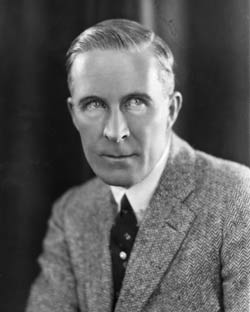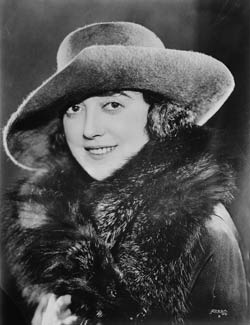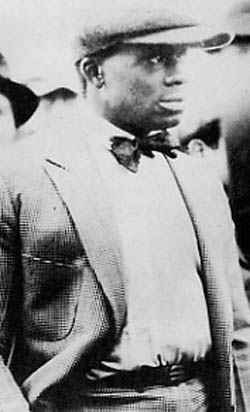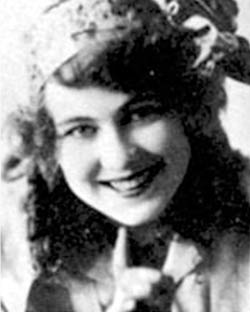 The film colony that left the East Coast (the birthplace of American film) and settled in and around Los Angeles in the 1910s moved with shocking speed to corner the global movie market. By the early 1920s, Hollywood was already Hollywood, a dreamscape shimmering with money and beauty and fame. The people who lived there were more than just famous names—they were famous faces, faces projected high and wide in ethereal black and white. To the outside world, Hollywood seemed to be a place where the sun always shone and so did the people. Not for nothing, these new celebrities were known as stars. Nothing like Hollywood had ever existed.
The film colony that left the East Coast (the birthplace of American film) and settled in and around Los Angeles in the 1910s moved with shocking speed to corner the global movie market. By the early 1920s, Hollywood was already Hollywood, a dreamscape shimmering with money and beauty and fame. The people who lived there were more than just famous names—they were famous faces, faces projected high and wide in ethereal black and white. To the outside world, Hollywood seemed to be a place where the sun always shone and so did the people. Not for nothing, these new celebrities were known as stars. Nothing like Hollywood had ever existed.
So imagine the horror when the world learned of the murder of William Desmond Taylor on the morning of February 2nd, 1922. Taylor was a famous director (and sometimes actor) who had helmed landmark films such as the first adaptations of Huckleberry Finn and Anne of Green Gables. He’d worked with some of the biggest stars of the era, including Mary Pickford, Wallace Reid and Mary Miles Minter. He was handsome, rich, and respected.

At the time, every day seemed to bring some fresh piece of scintillating detail. Pornographic pictures of Taylor with a variety of young actresses, lingerie with the initials of one of the studio’s biggest stars, a collection of keys that didn’t fit any locks in the house. Was Taylor a ladies man involved in some tawdry love affair gone wrong? Or was it something deeper, darker? Was he a blackmailer whose scheming had come back to destroy him?
No definite answers have ever been found, and Taylor’s murder remains officially unsolved. Adding to the mystery of his death in the years to come were bizarre revelations about his life that continued to come out in the investigation. For instance, it was only after his death that most people learned that William Desmond Taylor was not his real name. He’d been born William Deane-Tanner in Ireland (in 1867, not 1872 or 1877 as different sources list) and had moved to the states, married well in New York, and had a daughter. He went to work at his father-in-law’s antique business and lived an outwardly contented married life for seven years. Then, for reasons known only to him, he left work one day to go to lunch and simply vanished.
Abandoning his wife and child without a word, Deane-Tanner moved around the country working different jobs, eventually landing in Hollywood with a new name and a new career. He was staggeringly successful in the movie business.

Taylor’s murder—a cold case now for 91 years—will likely never be solved. Different theories have, of course, sprung up. One of the most compelling was outlined in Sidney D. Kirkpatrick’s fascinating true crime book A Cast of Killers. Kirkpatrick was writing a biography of the great film pioneer King Vidor when he discovered that Vidor had been obsessed with the Taylor murder for decades. Like Taylor, Vidor was a director in the silent era, and as late as 1967 Vidor had wanted to make a film about the murder. He spent years doing research, only to find his own solution to the murder in the tangled relationship of Taylor, the young actress Mary Mile Minter and Minter’s ghoulish stage mother, Charlotte Shelby.

The long forgotten silent film actress Margaret Gibson gave birth to yet another theory in 1964. After suffering a heart attack, as she lay dying on her kitchen floor, she confessed to the murder. According to witness Raphael Long:
Apparently, she had just converted to Roman Catholicism and was deeply concerned with the consequences of the hereafter. She wanted a priest, which was impossible, and she wanted to confess her “sins.” She then went on to explain that she had been a silent screen actress. She further stated that she had shot and killed a man by the name of William Desmond Taylor.
Long’s recounting of Gibson’s confession first appeared in an issue of a fanzine dedicated to the murder called Taylorology. Is it weird to have a publication dedicated to a murder case? Sure, but in a case like this one, it’s just one piece of weirdness among many.
Jake Hinkson, The Night Editor, is the author of The Posthumous Man and Saint Homicide.
Read all posts by Jake Hinkson for Criminal Element.

PS. Boys Don’t Cry director Kimberly Peirce worked for years on a movie about the murder. In an interview in 2008 she said “It’s a story that will eventually get made, The William Desmond Taylor murder. If you knew the research I did. I went to the King Vidor collection. I got everything that had ever been written on it. We solved the murder mystery. We figured out who did it, how they did it, and how and why it had to be covered up. It was an amazing experience. Hollywood basically covered up this murder along with the government to protect the industry that was about to be erased, and to protect America’s innocence.”
That was six years ago, so I assume her movie will not in fact get made. (Though I think she would do an amazing job of it.) Wonder if there are any other plans out there for a Taylor film…
Jake, William Castle’s 1951 HOLLYWOOD STORY is inspired by the Desmond Taylor murder, although it’s just a jumping-off point, not an attempt to accurately depict the crime. A terrific book that uses the case as a backdrop (fictionally) is Nina Revoyr’s THE AGE OF DREAMING, which I highly recommend.
Fascinating piece, Jake.
EM-Thanks for hipping me to Revoyr’s book. It looks fantastic.
EAG-Thanks!
I want to thank Eddie Muller for recommending Nina Revoyr’s book
Age of Dreaming. It’s beautifully written and the story is fascinating.